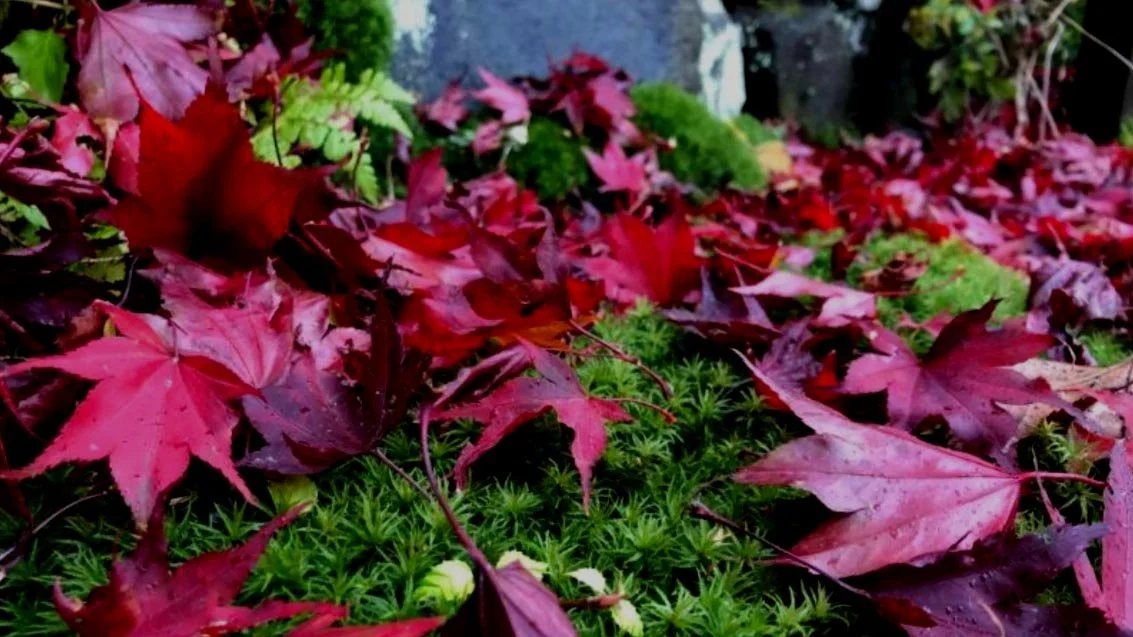In the maritime PNW climate, mosses have invaded and naturalized almost all of our native habitats, in one form or another. Our Western Washington locale provides Mr. Moss with his three favorite things: plenty of shade, regular moisture and soil acidity. Many gardeners embrace these soft and cushy creatures, admiring their colors and low maintenance qualities, while others think of moss as some sort of plague that never ends. This month is the perfect time to either go to war against Mr. Moss or to let him be, flourishing wherever he wants.
Consider the nature of true mosses with the simple fact that they have literally had our fine planet as a habitat for around 400 million years. Prehistoric Bryophytes, such as these, are from the beginnings of the plant world on Earth. In the eons that mosses have existed, they have certainly evolved and continue to flourish across the globe today. Right here in Western Washington you can look almost anywhere and see sheet mosses, clumping mosses, hanging mosses and even mosses (or close relatives) sold at local nurseries that make nice foot-traffic tolerant ground covers.
Now, being an OCD golfer myself, I simply cannot have excessive amounts of moss in my own turf, or on putting greens for that matter. You can make your own choice of course, and if it suits you then let it be. Coming out of winter in March, you will see moss everywhere in the turf and if left unchecked it will continue its invasion throughout the spring. For turf areas, gardeners can grab a granular moss killer (typically containing Iron in some form) and broadcast it using a simple spreader. Grasses can absorb a massive amount of Iron and simply turn a darker green, while moss cannot tolerate it and thus turns black and perishes. This may be a little bit more of a time saving and economical choice for many gardeners, but be careful not to get the granules on other surfaces as the Iron will stain concrete, wood, rock, and most other surfaces. Care should also be given not to get this on plant foliage, as it may burn and damage leaves.
The other option is a liquid application, which may take a little more time to apply with a hose-end or pump sprayer but it allows you to focus the treatment on specific mossy areas. Liquid moss controls with Iron are out there as options, but I would suggest a product like Moss Max liquid from Bonide. It comes in a handy spray bottle and offers a natural option containing Potassium. Your moss will turn a straw-yellow once dead, and without the metals in this product it can be applied directly onto patios, walkways, siding, wood or just about anywhere safely without any staining. This is the one product that can also be safely used on actual plants as well – but only on deciduous specimens when they are dormant in winter. I think mosses and lichens add character to older trees and shrubs and typically do not cause any issues. Some gardeners however do not agree, and in winter this Potassium product could be applied to bark and branches. But let me be honest, we are in Western Washington and the moss and lichens will definitely be back at some point.
If you take the time to treat the moss, make sure to rake or thatch it out once it has died. March is the perfect month to thatch your turf, which will remove this dead moss and all of the thatch build-up, allowing you to essentially start over. After an adequate thatching, lots of bare ground will be showing, which is a good thing. If you sprinkle some fresh local grass seed, organic lawn food and dolomite lime and then cover it all with a thin layer (1/8 inch to 1/4 inch) of compost, you are on your way to rejuvenating your turf for the season. Organic lawn food is the superior and safe fertilizer choice, adding to the food web in the soil and providing beneficial sources of magical compounds, like Humic Acid. It will also never burn anything, even fresh grass seed. An annual dose (or sometimes in both spring and fall) of lime is of huge benefit as well to the turf. With our native soil being acidic, the lime will simply help raise the pH level in your lawn. Since moss loves acidity and turf thrives in a more neutral to alkaline soil, you are reducing your potential of moss significantly and helping to create a better soil for the turf to thrive in. I do this for my lawn in the spring and fall, and the amount of moss I have to deal with now is a fraction of what it once was, for sure.
Hopefully you will consider mosses in parts of your own landscape, and whether or not to keep them here or stop them there. Visit your local nursery and talk with a professional horticulturist about your options, and hopefully they (like me) will explain that the lawn does not have to be a chemical depository in order to look sharp. Going green with quality organic products is easy and effective – simple as that. A healthy, safe and natural moss-free lawn is certainly possible if you put in some effort and follow these simple steps.



